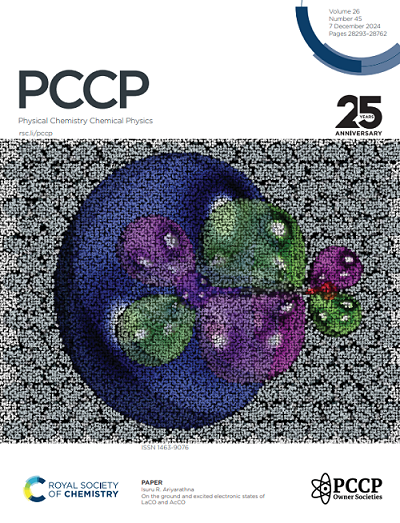用共价接枝策略在碳电极上共固定铑催化剂和LDH在双极电化学中电合成l -乳酸
IF 2.9
3区 化学
Q3 CHEMISTRY, PHYSICAL
引用次数: 0
摘要
这项工作展示了一个无线电酶平台,使用碳微球电极与铑催化剂和乳酸脱氢酶(LDH)共固定,在双极电化学系统中集成NADH再生和丙酮酸到l -乳酸转化。通过重氮接枝、Rh配位和共价酶偶联实现功能化的3D“聚合反应器”结构,使辅助因子循环和生物催化的空间耦合成为可能。HPLC显示,在12.5 V cm⁻¹下,l -乳酸的生成速度为0.04 mM cm-2 h,并且由于质量运输的加强,产生了大量的碳珠。这种无线、可扩展的设计消除了布线限制,并为手性化学物质的可持续合成提供了模块化适应性。本文章由计算机程序翻译,如有差异,请以英文原文为准。
Co-immobilization of rhodium catalyst and LDH on carbon electrode by covalent graft strategy for electrosynthesis L-lactate in bipolar electrochemistry
This work demonstrates a wireless electroenzymatic platform using carbon microsphere electrodes co-immobilized with a rhodium catalyst and lactate dehydrogenase (LDH) for integrated NADH regeneration and pyruvate-to-L-lactate conversion in a bipolar electrochemical system. The 3D "aggregate reactor" architecture, functionalized via diazonium grafting, Rh coordination, and covalent enzyme coupling, enables spatial coupling of cofactor recycling and biocatalysis, while HPLC revealed a L-lactate production rate of 0.04 mM cm-2 h⁻¹ under 12.5 V cm⁻¹ with a plenty of carbon beads attributed to enhanced mass transport. This wireless, scalable design eliminates wiring constraints and offers modular adaptability for sustainable synthesis of chiral chemicals.
求助全文
通过发布文献求助,成功后即可免费获取论文全文。
去求助
来源期刊

Physical Chemistry Chemical Physics
化学-物理:原子、分子和化学物理
CiteScore
5.50
自引率
9.10%
发文量
2675
审稿时长
2.0 months
期刊介绍:
Physical Chemistry Chemical Physics (PCCP) is an international journal co-owned by 19 physical chemistry and physics societies from around the world. This journal publishes original, cutting-edge research in physical chemistry, chemical physics and biophysical chemistry. To be suitable for publication in PCCP, articles must include significant innovation and/or insight into physical chemistry; this is the most important criterion that reviewers and Editors will judge against when evaluating submissions.
The journal has a broad scope and welcomes contributions spanning experiment, theory, computation and data science. Topical coverage includes spectroscopy, dynamics, kinetics, statistical mechanics, thermodynamics, electrochemistry, catalysis, surface science, quantum mechanics, quantum computing and machine learning. Interdisciplinary research areas such as polymers and soft matter, materials, nanoscience, energy, surfaces/interfaces, and biophysical chemistry are welcomed if they demonstrate significant innovation and/or insight into physical chemistry. Joined experimental/theoretical studies are particularly appreciated when complementary and based on up-to-date approaches.
 求助内容:
求助内容: 应助结果提醒方式:
应助结果提醒方式:


